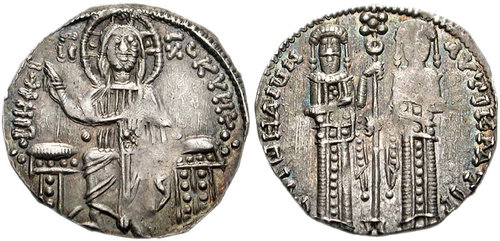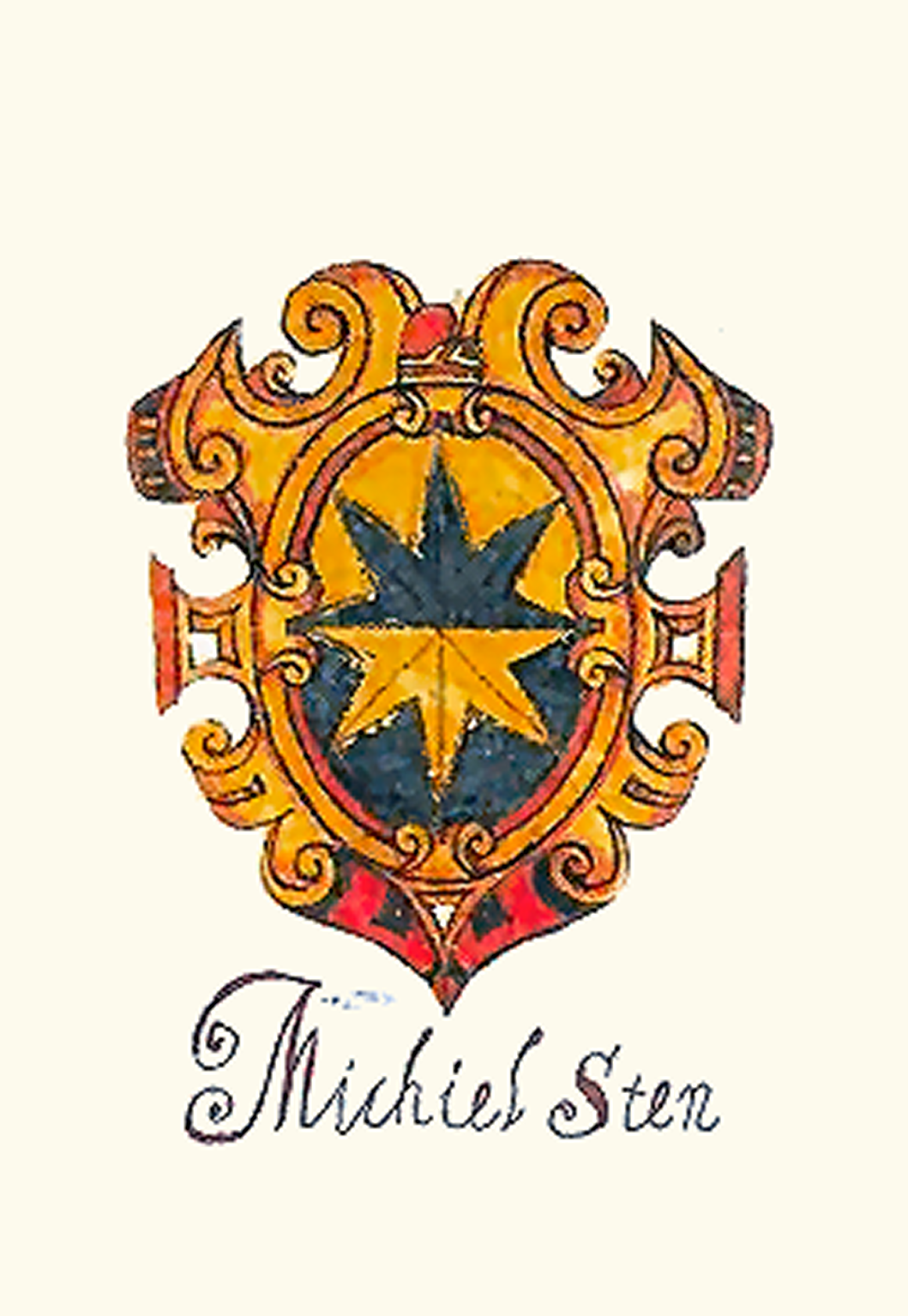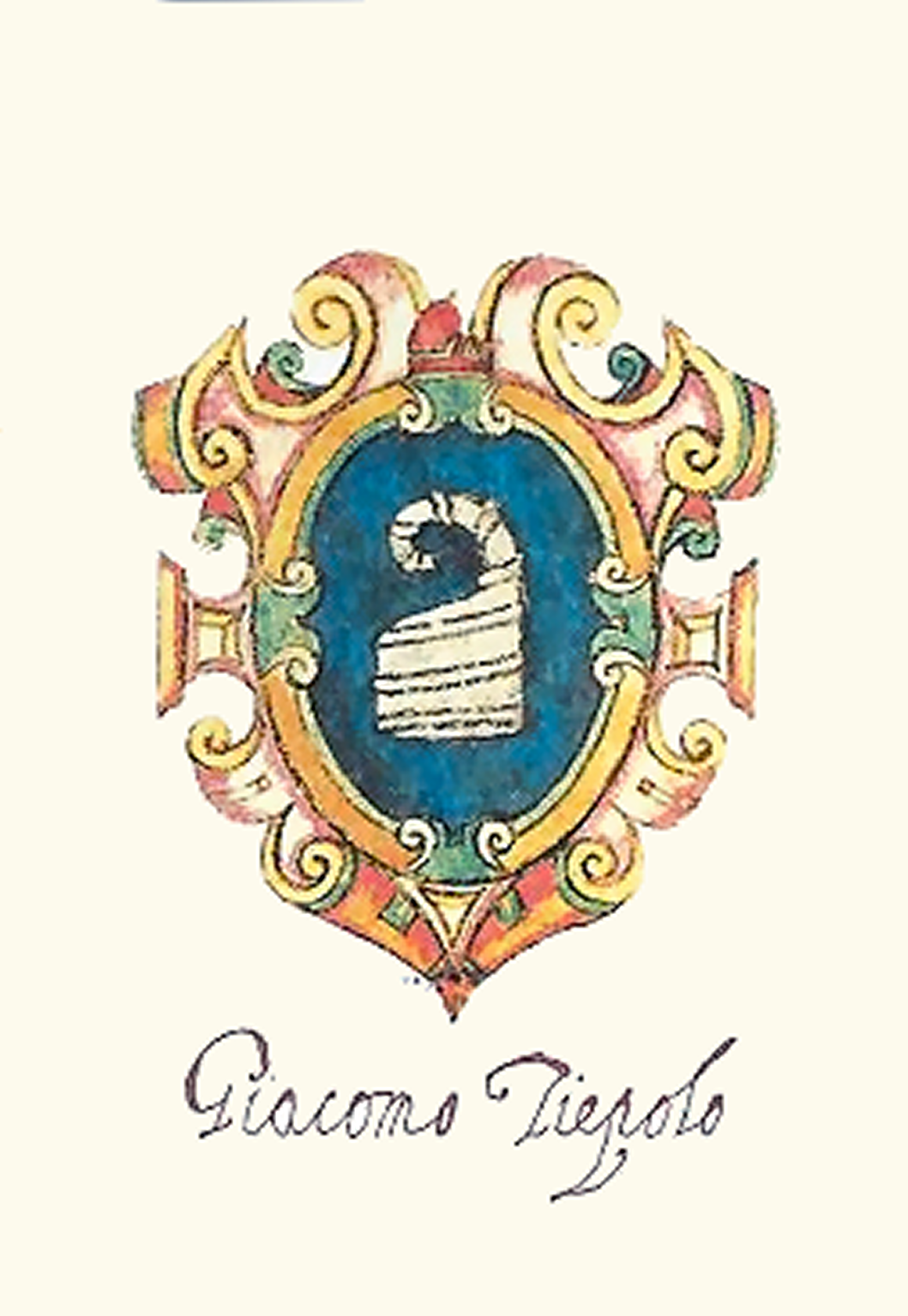|
Venetian Grosso
The Venetian grosso (plural grossi) is a silver coin first introduced in Republic of Venice, Venice in 1193 under Doge of Venice, doge Enrico Dandolo. It originally weighed 2.18 grams, was composed of 98.5% pure silver, and was valued at 26 . Its name is from the same root as ''groschen'' and the English groat (coin), groat, all deriving ultimately from the ''denaro grosso'' ("large penny"). Its value was allowed to float relative to other Venetian coins until it was pegged to 4 soldini in 1332, incidentally the year the soldino was introduced. In 1332, 1 grosso was the equivalent of 4 ''soldini'', or 48 '. Economic background The Renaissance of the 12th century brought wealth and economic sophistication, but Venetians continued to use the badly debased remnants of the coinage system introduced by Charlemagne.John Porteous, ''Coins in History'', page 83. Venice struck silver pennies (called denari in Italian) based on the coinage of Verona, which contained less than half a g ... [...More Info...] [...Related Items...] OR: [Wikipedia] [Google] [Baidu] |
Republic Of Venice
The Republic of Venice ( vec, Repùblega de Venèsia) or Venetian Republic ( vec, Repùblega Vèneta, links=no), traditionally known as La Serenissima ( en, Most Serene Republic of Venice, italics=yes; vec, Serenìsima Repùblega de Venèsia, links=no), was a sovereign state and Maritime republics, maritime republic in parts of present-day Italy (mainly Northern Italy, northeastern Italy) that existed for 1100 years from AD 697 until AD 1797. Centered on the Venetian Lagoon, lagoon communities of the prosperous city of Venice, it incorporated numerous Stato da Màr, overseas possessions in modern Croatia, Slovenia, Montenegro, Greece, Albania and Cyprus. The republic grew into a Economic history of Venice, trading power during the Middle Ages and strengthened this position during the Renaissance. Citizens spoke the still-surviving Venetian language, although publishing in (Florentine) Italian became the norm during the Renaissance. In its early years, it prospered on the salt ... [...More Info...] [...Related Items...] OR: [Wikipedia] [Google] [Baidu] |
Methods Of Coin Debasement
Coin debasement is the act of decreasing the amount of precious metal in a coin, while continuing to circulate it at face value. This was frequently done by governments in order to inflate the amount of currency in circulation; typically, some of the precious metal was replaced by a cheaper metal when the coin was minted. But when done by an individual, precious metal was physically removed from the coin, which could then be passed on at the original face value, leaving the debaser with a profit. Coin debasement was effected by several methods, including clipping (shaving metal from the coin's circumference) and sweating (shaking the coins in a bag and collecting the dust worn off). Until the mid-20th century, coins were often made of silver or (rarely) gold, which were quite soft and prone to wear. This meant coins naturally got lighter (and thus less valuable) as they aged, so coins that had lost a small amount of bullion would go unnoticed. Modern coins used as currency are ma ... [...More Info...] [...Related Items...] OR: [Wikipedia] [Google] [Baidu] |
1193 Establishments In Europe
Year 1193 ( MCXCIII) was a common year starting on Friday (link will display the full calendar) of the Julian calendar. Events By place Levant * March 4 – Saladin (the Lion) dies of a fever at Damascus. The lands of the Ayyubid Dynasty of Syria and Egypt are split among his relatives. During his reign, he briefly unites the Muslim world, and drives the Crusaders out of Jerusalem to a narrow strip of coast. At the time of his death, Saladin has seventeen sons and one little daughter. Al-Afdal succeeds his father as ruler (''emir'') of Damascus, and inherits the headship of the Ayyubid family. His younger brother, the 22-year-old Al-Aziz, proclaims himself as independent sultan of Egypt. Al-Zahir receives Aleppo (with lands in northern Syria), and Turan-Shah receives Yemen. The other dominions and fiefs in the Oultrejordain (also called Lordship of Montréal) are divided between his sons and the two remaining brothers of Saladin. * May – The Pisan colon ... [...More Info...] [...Related Items...] OR: [Wikipedia] [Google] [Baidu] |
Obsolete Italian Currencies
Obsolescence is the state of being which occurs when an object, service, or practice is no longer maintained or required even though it may still be in good working order. It usually happens when something that is more efficient or less risky replaces it. The international standard IEC 62402:2019 Obsolescence Management defines obsolescence as the "transition from available to unavailable from the manufacturer in accordance with the original specification". Obsolete also refers to something that is already disused or discarded, or antiquated. Typically, obsolescence is preceded by a gradual decline in popularity. Consequences Driven by rapid technological changes, new components are developed and launched on the market with increasing speed. The result is a dramatic change in production methods of all components and their market availability. A growing industry sector is facing issues where life cycles of products no longer fit together with life cycles of required components ... [...More Info...] [...Related Items...] OR: [Wikipedia] [Google] [Baidu] |
Silver Coins
Silver coins are considered the oldest mass-produced form of coinage. Silver has been used as a coinage metal since the times of the Greeks; their silver drachmas were popular trade coins. The ancient Persians used silver coins between 612–330 BC. Before 1797, British pennies were made of silver. As with all collectible coins, many factors determine the value of a silver coin, such as its rarity, demand, condition and the number originally minted. Ancient silver coins coveted by collectors include the Denarius and Miliarense, while more recent collectible silver coins include the Morgan Dollar and the Spanish Milled Dollar. Other than collector's silver coins, silver bullion coins are popular among people who desire a "hedge" against currency inflation or store of value. Silver has an international currency symbol of XAG under ISO 4217. Origins and early development of silver coins The earliest coins in the world were minted in the kingdom of Lydia in Asia Minor around 600 B ... [...More Info...] [...Related Items...] OR: [Wikipedia] [Google] [Baidu] |
Coinage Of The Republic Of Venice
The Coinage of the Republic of Venice include the coins produced by the Republic of Venice from the late 12th century to 1866. After this date, coins were still produced in Venice. From the 16th century, the coinage was made in the very prominently-located Zecca of Venice, close to the Doge's Palace. History Although there is no information about coinage in what was the Duchy of Venice (a semi-independent entity within the Byzantine Empire from which the Republic of Venice originated), ancient historians such as Andrea Dandolo and Marin Sanudo mention that the privilege of coinage was given to Venice by the kings of Italy Rudolph II (in 921) and Berengar II (in 950); however, it is more likely that this privilege had been granted by Byzantine emperors, [...More Info...] [...Related Items...] OR: [Wikipedia] [Google] [Baidu] |
Basilikon
The ''basilikon'' ( el, βασιλικόν �όμισμα}, "imperial oin), commonly also referred to as the (Greek: δουκάτον), was a widely circulated Byzantine silver coin of the first half of the 14th century. Its introduction marked the return to a wide-scale use of silver coinage in the Byzantine Empire, and presaged the total abandonment of the gold coins around the middle of the century. History The ''basilikon'' was introduced shortly before 1304 by Emperor Andronikos II Palaiologos (r. 1282–1328), in direct imitation of the Venetian silver ducat or '' grosso'', chiefly to pay the mercenaries of the Catalan Company... The Byzantine coin closely followed the iconography of the Venetian model, with a seated Christ on the obverse and the two standing figures of Andronikos II and his son and co-emperor Michael IX Palaiologos (r. 1294–1320) replacing St. Mark and the Doge of Venice on the reverse. The similarity was reinforced by the name of the new coin: the '' ... [...More Info...] [...Related Items...] OR: [Wikipedia] [Google] [Baidu] |
Venice Doge Antonio Venier Matapan Grosso
Venice ( ; it, Venezia ; vec, Venesia or ) is a city in northeastern Italy and the capital of the Veneto region. It is built on a group of 118 small islands that are separated by canals and linked by over 400 bridges. The islands are in the shallow Venetian Lagoon, an enclosed bay lying between the mouths of the Po and the Piave rivers (more exactly between the Brenta and the Sile). In 2020, around 258,685 people resided in greater Venice or the ''Comune di Venezia'', of whom around 55,000 live in the historical island city of Venice (''centro storico'') and the rest on the mainland (''terraferma''). Together with the cities of Padua and Treviso, Venice is included in the Padua-Treviso-Venice Metropolitan Area (PATREVE), which is considered a statistical metropolitan area, with a total population of 2.6 million. The name is derived from the ancient Veneti people who inhabited the region by the 10th century BC. The city was historically ... [...More Info...] [...Related Items...] OR: [Wikipedia] [Google] [Baidu] |
Cristoforo Moro
Cristoforo Moro (1390 – November 10, 1471) was the 67th Doge of Venice. He reigned from 1462 to 1471. Family The Moro family settled in Venice in the 5th century when Stephanus Maurus, a great-grandson of Maurus, built a church on the island of Murano. Cristoforo was the eleventh person from the family to be elected doge. His dogaressa was Cristina Sanudo. Life After graduating from university, Moro held various public offices. He was the Venetian ambassador to the Popes Eugene IV and Nicholas V. Saint Bernardino of Siena was said to have prophesied that Moro would one day become doge, and as the fulfillment of a solemn vow Moro had the Church of Saint Giobbe built and dedicated to Bernardino's memory. He bequeathed his fortune to various charitable organizations and foundations, including the Church of Saint Giobbe. Doge Moro's reign was marked by the beginning of a long war between Venice and the Turks. In 1463 Pope Pius II sent Moro a consecrated sword with the intention ... [...More Info...] [...Related Items...] OR: [Wikipedia] [Google] [Baidu] |
Andrea Contarini
Andrea Contarini was doge of Venice from 1367 to 1382. He served as doge during the War of Chioggia, which was fought between the Venetian Republic and the Republic of Genoa. Contarini was noted for his personal bravery during the war. He also led a fundraising effort in which he personally liquidated his fortune for the country. Though in his seventies, he took personal command of the Venetian Navy (with Admiral Vettor Pisani as his chief of staff) and led troops in the critical Battle of Chioggia. Notes References * 14th-century Doges of Venice Andrea Andrea is a given name which is common worldwide for both males and females, cognate to Andreas, Andrej and Andrew. Origin of the name The name derives from the Greek word ἀνήρ (''anēr''), genitive ἀνδρός (''andrós''), that ref ... Republic of Venice admirals People of the War of Chioggia {{Italy-noble-stub ... [...More Info...] [...Related Items...] OR: [Wikipedia] [Google] [Baidu] |
Michele Steno
His tomb in Venice. Michele Steno (''Michiel Sten'' in Venetian Language; 1331 – December 26, 1413) was a Venetian statesman who served as the 63rd Doge of Venice from December 1, 1400 until his death. He is remembered as the ruler crucial for establishing the Domini di Terraferma, in the aftermath of the War of Padua. Biography Steno was born in Venice into a family of some, though not great, wealth, and had lived a dissolute life in youth; he and a number of other young men were at one point nearly executed by the government for covering the Doge Marino Faliero's throne with "ignominious" inscriptions against him and his spouse, Aluycia Gradenigo. He later served as proveditor of Venice, and proved a capable diplomat. In 1400 he was elected as doge as a compromise choice, since previous votes had become deadlocked. Upon becoming Doge he took to dressing like Lorenzo Celsi, who had been known for his elegance of dress. In his accession's year, Venice begun a successful ... [...More Info...] [...Related Items...] OR: [Wikipedia] [Google] [Baidu] |
Jacopo Tiepolo
Jacopo Tiepolo (died 19 July 1249), also known as Giacomo Tiepolo, was Doge of Venice from 1229 to 1249. He had previously served as the first Venetian Duke of Crete, and two terms as Podestà of Constantinople (1218-1220 and 1224-1227). During his first term, following the capture and mysterious end of Peter of Courtenay, Tiepolo acted as ''de facto'' ruler of the Latin Empire, negotiating treaties on behalf of the Empire with Egypt and the Seljuk Turks. History Probably born in the latter part of the twelfth century, Jacopo assumed the post of Duke of Crete (Italian: ''duca di Candia'') around the year 1212. During his tenure, Venetian dominion over Crete was challenged considerably by the Greek locals, culminating eventually in its capture at the hands of Marco Sanudo. His success, however, was short-lived, as a Venetian fleet soon arrived, forcing him to evacuate the island. Jacopo was elected Doge on 6 March 1229, his predecessor Pietro Ziani having abdicated the month b ... [...More Info...] [...Related Items...] OR: [Wikipedia] [Google] [Baidu] |

.jpg)
.jpg)



.jpg)


